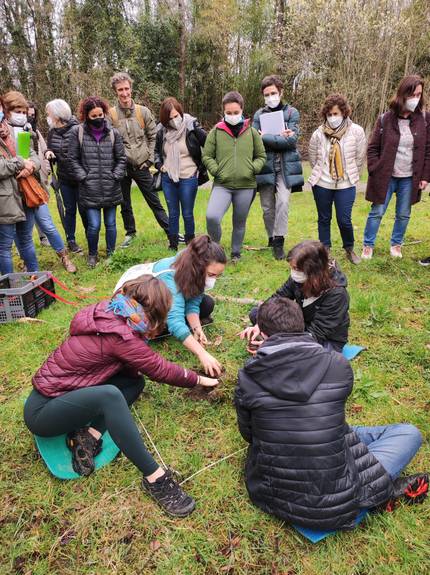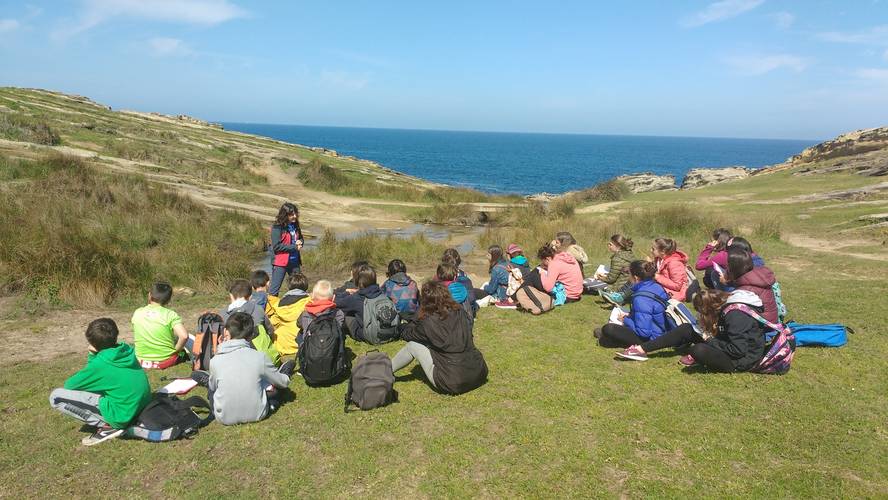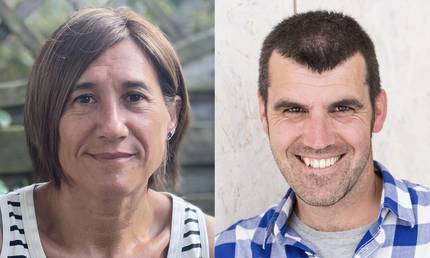Blindness to indigenous species, problem of Basque society
A study by researchers from the UPV/EHU and Aranzadi reveals that adolescents in the Basque Country have limited knowledge of biodiversity, especially with regard to native fauna and flora. Young people show signs of ecological illiteracy and scientists believe that, in the climate of biodiversity and the weather emergency, it is essential to promote this knowledge in society. They call for action.
The study asked 1,000 young people between the ages of 12 and 13 to list animals and plants they know and only 7.4% had the ability to name ten plants. On average, they have only been able to name four or five plants. Plant blindness has been identified among young people.
According to Oihana Barrutia Sarasua, researcher at the UPV/EHU, this syndrome contains a series of attitudes: “They don’t pay attention to plants, they don’t have basic knowledge about them, so they despise them. They do not understand the importance of plants, which has a worrying effect: they do not perceive the importance of plants to ensure the sustainability of the planet and the objectives they can help us achieve.”
Although greater ability to designate animals has been demonstrated, they have little knowledge of the native species. Mention is above all made of exotic and international icons. Researchers have identified a lack of awareness of native species. “Biodiversity loss and climate change are one of the great challenges we have in this society. How do we cope if our knowledge of biodiversity is becoming scarcer? It is not a small thing,” says Iñaki Sanz -Azkue, a researcher at Aranzadi. “The colonization of alien species is one of the main causes of biodiversity decline. And only if we know the indigenous species can we begin to understand how the ecosystems and the environment here work.”
“There are many endangered species here and they don’t realize the danger this poses,” Barrutia adds. “They would make money easier to protect the panda bear than to protect a salamander here. Perhaps in Euskal Herria we should choose some indigenous icons species.”
Iconic species
_display_home.jpg)
Researchers are concerned about the decline in attention to local living beings and collective memory, which can lead to the social extinction of species, jeopardizing the objectives of biodiversity recovery. “Knowledge and species designation has been shown to lead to adhesion.”
It's the most cited autochthonous wolf. Only a percentage of people point to amphibians as the most threatened. “What does the wolf symbolize?” says Sanz -Azkue. “Otsori no longer exists in the Basque Country, only occasionally enters Álava. One of those you haven't seen is the most nominated? This means that animals have not been known in their direct relationship with nature, perhaps in documentaries and zoos.”
Reflection of society
Researchers believe that what has been seen in young people is a reflection of society as a whole. I mean, older generations also have that difficulty. “We now have the opportunity to reflect deeply and design how we want to make the transmission for the future.”
In the research they have sought to clarify whether the socioeconomic factors of young people influence the knowledge of living beings, and have seen that it is mainly due to the size of their people. The inhabitants of small towns have more capacity than the citizens to know their inhabitants.
The challenge of education

Researchers believe that education can be key to restoring biodiversity literacy and addressing the current serious environmental problem. They stress the importance of the fact that books and audiovisual materials used in schools refer, for example, to indigenous species. And, Sanz -Azkue, “nature is not learned in the classroom, it has to be learned in outer spaces. And because math or English classes are prepared, classes need to be prepared in outdoor spaces.”
“First of all, it is important for teachers to properly form and deepen knowledge of native species, as they have the same problem as young people. In addition, it is essential to develop a methodology to make the inhabitants of the place known and transmit how to observe nature. In this context, children themselves will begin to acquire knowledge and ask questions. We must try to discuss these hypotheses arising from the small situations that occur in them”. Adherence to nature is one of the great challenges of education today.
Researchers have seen the need to further investigate the relationship between nature and culture, and to this end they see the construction of collaborative bridges between university researchers and educational agents as key. The research results have been published in the journal Environmental Education Research. In addition to Barrutia and Sanz -Azkue, UPV researchers Aritz Ruiz -González and José Ramón Díez López participated.







